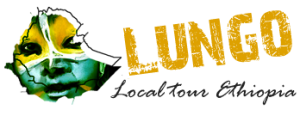
Lungo local tour Ethiopia follow the review of special destination of lonely planet, trip advisor and thorn tree travel destination. Best attraction in omo vally are mrsi, hamer, karo, dasenech and arebore tribe.

Trip advisor Best attraction in omo valley
Lungo local tour Ethiopia follow the review of special destination of trip advisor and thorn tree travel destination. Best attraction in omo valley are mrsi, surma, hamer, karo, dasenech and arebore tribe.

Located in the South, this distant region feels like a world away from Northern Ethiopia – with a rural and tropical feel, it was more reminiscent of sub-Saharan Africa than anywhere else in the country. the Omo Valley more similar to parts of Kenya than the rest of Ethiopia, a fact perhaps unsurprising given the border is, in parts, just 30km away.
Historically many of the indigenous people from Kenya are supposed to have emigrated from Ethiopia and up until recently, nomadic communities from Ethiopia would frequently move between the two countries. Even though these nomadic people may not move internationally anymore, their cultures are still very strong in this almost forgotten part of Africa.

For most travellers visiting the Omo Valley, this is precisely the motivation behind their trip – the opportunity to gain a glimpse of the indigenous communities that still inhabit this off the beaten path region.
The first and predominant reason that the Omo Valley is like nowhere else on earth is due to the multiplicity and strength of the indigenous cultures that exist here. In Omo Valley, it feels like time has stood still, or at the very least that it isn’t 2018. this in the least patronising way possible of course, for the people of the Omo Valley region are extremely sophisticated in their skills, rituals and lifestyles. They have to be; for in this harsh, arid and scorching environment survival isn’t easy.

People of the Omo Valley
There are over 16 different ethnic groups living in the Omo Valley region, all with different customs, rites, rituals, architecture and dress.
The Hamer People – The women traditionally have their hair braided and stained with red clay. They perform the traditional Bull Jumping Ceremony, which marks a man’s transition from boyhood.
The Banna People – Closely related to The Hamer, the Banna are known for their entrepreneurial skills and run popular markets around the area.

The Konso People – Famous for their stone wall villages and recognisable-shaped homes with thatched roofs and pottery ornaments, many Konso villages are UNESCO-listed.
The Mursi People – The women traditionally wear large lip plates and have stretched ear lobes.
The Karo People – Renowned for their incredible body paintwork.
The Daasanach People – One of the smallest ethnic groups in the Omo Valley, the Daasanach live on the banks of the Omo River in round homes that can be collapsed and reassembled in less than a few hours.
Other Omo Valley indigenous communities include: The Ari, The Nyangatom, The Surma, The Tsemay and The Dorze.

Ethiopia, Hamar, Jumping Bull Ceremony
Witnessing a famous Hamer ritual – the Jumping Bull Ceremony – which marks a man’s transition from boyhood was an obvious. The ceremony began with his female relations being whipped to show their love for the boy and ended with the naked man jumping onto and then running across a line of oxen held in place by his male relatives. Even though there were quite a few other tourists at this event, it really was truly spectacular.
The Konso villages, with their sophisticated architecture and societal structure were amazing to see and it’s no surprise they are one of Ethiopia’s 9 listed UNESCO World Heritage Sites.

WHO ARE THE OMO VALLEY TRIBES?
Inhabited for over two million years, and home to some of the earliest humans on the planet, the 2,400km2 Lower Omo Valley is believed to have been an ancient crossroads for people migrating across the African continent. Today, over 130,000 people call the Lower Omo Valley home, divided into a network of around 12 pastoralist tribes including the Hamer, Bashada, Benna, Karo, Kwegu, Nyangatom, Dassanach, Mursi, Suri, and Bodi. With inter-tribal marriage not usually permitted, each tribe in the Lower Omo Valley has maintained its own, very distinctive traditions.
The visual differences between the tribes are striking – the heavy lip plates of the Mursi women, young Karo boys painted and patterned in thick white ash, the ochre-plastered hair of the Hamer, the blood-drinking Bodi men who compete to have the fattest stomach – but the diversity here runs deeper than body adornment. This small area is thought to be one of the most genetically and linguistically diverse in the world, and offers a significant insight into the history of human evolution.

But all of this is threatened. By an expanding, and some would say exploitative, tourism industry; and more recently by the Gibe III dam on the Omo River, which has stopped the biannual floods the tribes rely on to bring fertile silt to their lands, worsening the effects of drought in the valley.

WHAT DOES A VISIT TO THE OMO VALLEY ENTAIL?
The Lower Omo Valley lies some 800km from Ethiopia’s modern capital Addis Ababa. Tours to this region will usually see you taking an hour’s flight to the nearby towns of Arbaminch or Jinka, from where the tribal villages are a few hours’ drive. Alternatively, you can reach the valley overland from Addis via the beautiful Bale Mountains.
It will take a couple of hours to drive between each of the Omo Valley villages, so you can expect to spend around four hours a day being bumped along in a 4×4. Ideally, you’ll want to spend at least a week in the Lower Omo Valley to make the most of your visit, and to ensure that economically your stay is as beneficial as possible to the host communities. Usually you’ll spend a day or two in each place, or at least half a day if you are tight on time.
In that time, you’ll visit a variety of communities; you could be exploring the Monday market in Turmi, marvelling at the legendary fine pottery and the Hamer tribe’s intricate, butter-and-ochre-coated hairstyles, for example. Or perhaps visit Dimeka’s colourful Saturday market, which attracts elegant, bead-wearing Benna women selling handicrafts and jewellery. You will travel overland to traditional Mursi villages, famous for the fierce stick-fighting between tribesmen, or – if you’re lucky – be invited to a Hamer wedding celebration complete with bull-jumping and ladies in exquisitely-adorned leather skirts.

Where will I stay?
Accommodation is usually in several of the lodges which dot the valley; they employ local staff and source provisions from the local area. In the Omo villages the lodges are basic but clean and comfortable, although as is to be expected in a remote, rural Ethiopian valley, they can’t always guarantee Wi-Fi, reliable hot water or electricity supplies. Camping in the Lower Omo Valley is also a possibility.

